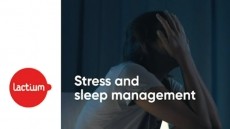Tackling toxins: Probiotic yoghurt provides mercury detox

Speaking exclusively to this publication, Dr Gregor Reid, a scientist at the Lawson Health Research Institute and Western Ontario University, said: “About eight years ago I asked a grocery store if they sold chickens that were free range and without exposure to antibiotics and hormones and was told no, there is no market for it. Now such products are everywhere. As more people become aware of their exposure to toxins and the damage they can cause, especially to the fetus and infants, demand for detox products will increase.”
These comments were made in the context of a study led by Dr Reid and researchers part-funded by the Bill and Melinda Gates Foundation which found that probiotic yoghurt can reduce the uptake of certain heavy metals and environmental toxins by up to 78% in pregnant women.
A 21st century health problem
Writing in mBio, the journal of the American Society for Microbiology, the researchers described exposure to environmental toxins as “a 21st century health problem that is often the result of dietary intake”.
They said that metals like mercury and arsenic are released due to human activities such as agriculture and mining, and enter the food chain and drinking water supplies. Whilst this is a particular problem in developing countries where regulations for industrial activities are often limited or poorly enforced, it is also an issue for the western world.
“Lake Erie in Canada/US supplies water for millions of people, and it is fished as well. It is just as toxic for mercury as Lake Victoria,” said Dr Reid.
The effects of low-level mercury exposure include delayed neurological and cognitive development in children, according to studies.
Previous lab research at Lawson had showed that the probiotic strain Lactobacillus rhamnosus GR-1 had the ability to bind to heavy metals. However, clinical research was needed to confirm whether this mechanism would prevent the body from absorbing them.
Testing the theory
This theory was tested in 44 school aged children and 60 pregnant women in Mwanza, Tanzania, near Lake Victoria, an area known for having particularly high environmental pollution. The researchers assessed existing metal levels in the participants’ bodies and found mercury and lead were present at levels of up to seven times those typically found in Canadian children.
After consuming a yogurt containing 10 CFU (Colony Forming Units) of Lactobacillus rhamnosus GR-1 per 250g for 19 days, the children showed positive but not statistically significant results. The pregnant women showed more dramatic outcomes after consuming the yoghurt for an average of 102 days: the probiotic yoghurt protected them from further uptake of mercury by up to 26% and arsenic by up to 78%.
“This work has demonstrated the potential value of long-term probiotic-based interventions to counter mercury and arsenic exposure in vulnerable populations,” wrote the researchers.
They suggested that the approach could be disseminated at an affordable cost in developing countries, for example via community yogurt kitchens, but could also be applied in the developed world, for example, for those living near mines.
Governments in denial
However, developing detox yoghurts or setting up yoghurt kitchens to tackle the problem of toxic metal poisoning involves governments admitting there is a problem and companies taking a risk – something Dr Reid doesn’t think either is willing to do.
“We proposed the idea of a probiotic yoghurt with detoxication properties to a multi-national dairy about four years ago. While their marketing people loved the idea and felt its time would come, the corporate people were worried about their brands being harmed or not getting regulatory approval,” he said.
He added: “The Ontario Ministry of Agriculture and Food also rejected a project we submitted recently, basically denying there is a problem here. A kids’ park was found to be highly contaminated with lead and their answer was to close it, rather than look if the kids had elevated levels.”
Ironically, Dr Reid said he believed the detox approach “has great potential for product growth and profits”.
Regardless of the resistance they are coming up against, Dr Reid and his team are pushing forwards with their work. “Next we will work with researchers in Lille, France, to study in vivo effects and get an idea of the mechanisms of action,” he said.
Source: mBio
September/October 2014, volume 5, issue 5 doi:10.1128/mBio.01580-14
“Randomized Open-Label Pilot Study of the Influence of Probiotics and the Gut Microbiome on Toxic Metal Levels in Tanzanian Pregnant Women and School Children”
Authors: Jordan E. Bisanz, Megan K. Enos, Joseph R. Mwanga, John Changalucha, Jeremy P. Burton, Gregory B. Gloor, Gregor Reid















